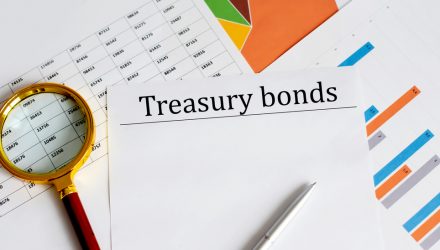Inverse or short Treasury bond exchange traded funds have been a great way for investors to hedge rising interest rate risks and capitalize on the pullback in government bonds this year.
For example, bond investors could take on a position to hedge against a decline in bond prices or rise in yields through simple inverse or short Treasury bond ETFs, such as the Direxion Daily 7-10 Year Treasury Bear 1x Shares (NYSEArca: TYNS), Direxion Daily 20+ Year Treasury Bear 1x Shares (NYSEArca: TYBS), or ProShares Short 20+ Year Treasury (NYSEArca: TBF).
The Direxion Daily 20+ Year Treasury Bear 3x Shares ETF (NYSEArca: TMV), which tracks the 300% short daily performance of the NYSE 20 Year Plus Treasury Bond Index, has been a popular pick for more aggressive exposure to the turns in the Treasury market. Additionally, the ProShares UltraShort 20+ Year Treasury (NYSEArca: TBT) tries to reflect the -2x or -200% daily performance of the Barclays U.S. 20+ Year Treasury Bond Index and the ProShares UltraPro Short 20+ Year Treasury (NYSEArca: TTT) takes the -3x or -300% daily performance of the Barclays U.S. 20+ Year Treasury Bond Index.
The bet on falling Treasuries or rising rates has panned out this year as yields on the benchmark 10-year Treasury note settled at around 2.743% on Friday, compared to 1.496% at the end of last year, the Wall Street Journal reports.
Investor and financial historian William Bernstein of Efficient Frontier Advisors, though, warned of the added risks of leveraged inverse ETF strategies, or those that provide -2x or even -3x returns of the underlying market.
Bernstein told the WSJ, “Over the long haul, these ETFs are a losing proposition.”
Nevertheless, ProShares Chief Executive Michael Sapir argued that the ETFs were doing exactly what they were designed to do as tools for knowledgeable investors who are keenly tapped into the market. While they provide the opposite return of certain Treasury-bond price moves on a single-day basis, leveraged returns can be higher or lower than that over the long-term, especially in extremely volatile market conditions due to compounding effects of the single-day moves, he warned.
“No one should invest in any of these funds — or any fund — unless they feel like they want to do the homework to really understand the fund, the opportunity and the risk,” Sapir told the WSJ.
Some have also utilized these short or bearish ETFs as a way to hedge market risks. For example, the Clark Group Asset Management started building up a position in the ProShares Short 20+ Year Treasury ETF back in March 2021, and the ETF now makes up about 20% of Clark Group’s fixed-income portfolios. The ride hasn’t been smooth since the position lost money when government bonds rallied.
“We just explain that it’s an excellent hedge against rates going up,” Clark told the WSJ.
For more news, information, and strategy, visit VettaFi.
